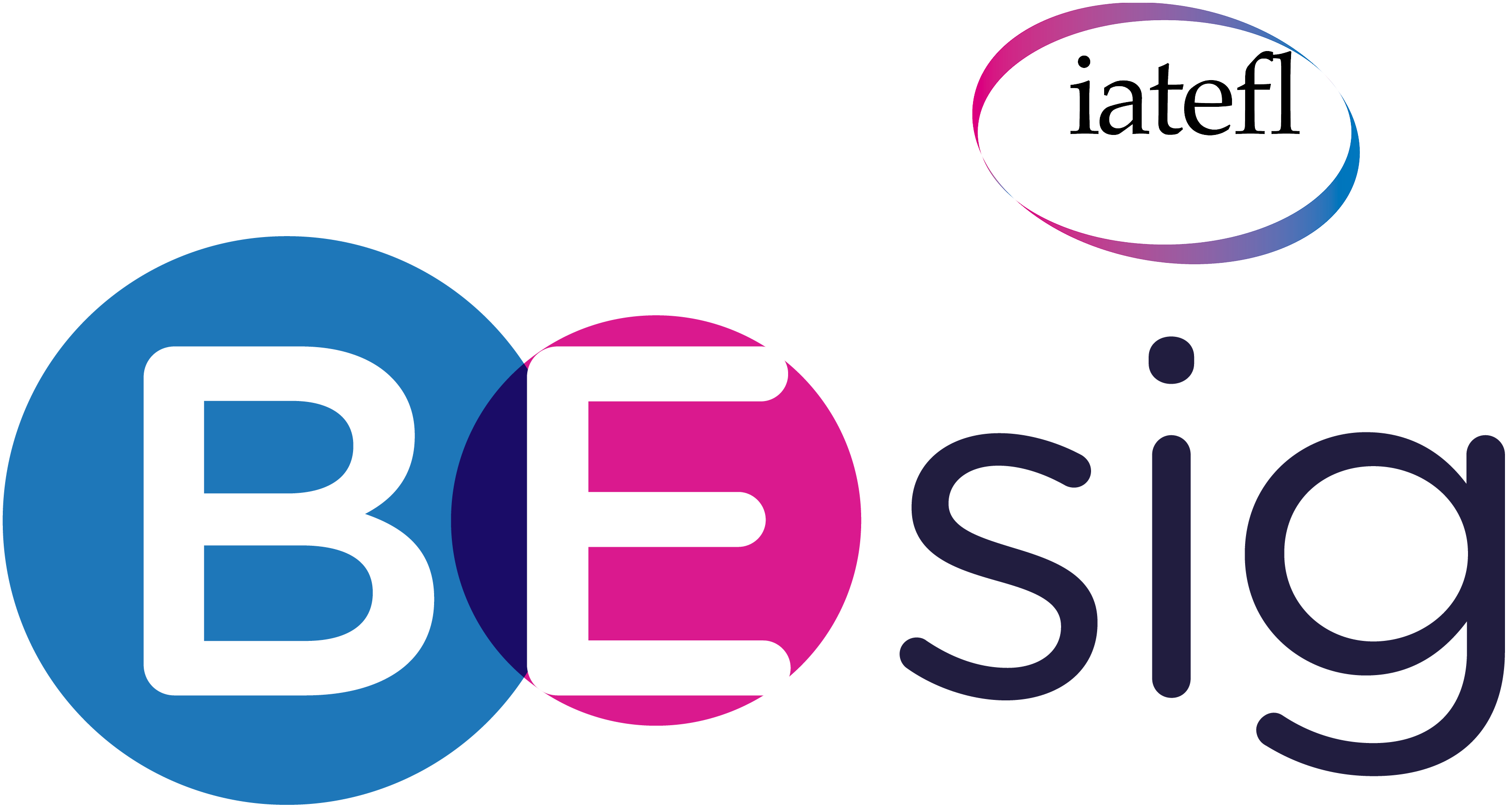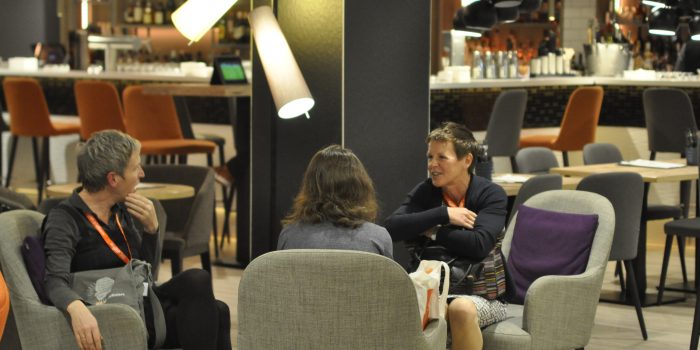
Valentina Dodge
In this interview, we discover how 25 years in the business of business English can mould a trainer. In addition, Valentina Dodge talks about the important issues concerning climate change and sustainability as well as her fondest BESIG memories.
Bio: Valentina Dodge has 25 years’ experience in BE teaching, training, materials design, and corporate program design, including nine years working one of the first open web platforms for blended language learning. She is based in southern Italy where she runs bespoke courses for local companies. She is also an international Quality Auditor for PeopleCert IT and Business products.
What are your top three moments of the 2019 BESIG conference?
First of all, I just loved the intertwined “Back to Basics” and Global Issues threads. There’s a lot wrong with our world caused by a lot of bad business so it’s great that we got the opportunity to step back and reflect on our position and share thoughts on our way forward.
Secondly, out of those underlying themes came empathy and listening. There were many workshops on our roles as coaches/ counsellors.
Last but by no means least, being in the same room with like-minded individuals just unleashes such great spontaneous exchanges. After months of reading blogs, joining webinars, or absorbing online resources, I always find meeting up with professionals, seeing their smiles and bounce, and all the related networking opportunities immensely invigorating. If our high carbon footprint to get to these events weren’t so high, I’d advocate we should have more of these events!
As an experienced BESIG conference presenter, what advice would you give a first-time speaker?
Be yourself, everyone is different and it’s important for you to express that uniqueness. Rather than fitting into a fixed presentation style, it’s uplifting when first-time presenters find their “own voice” and contribute that to the collective development of those who’ve chosen to attend. It takes courage to be who you are; we need more people who are brave enough to think outside the box – even disrupt – rather than simply reproduce what we might have already heard.
What is the first step you take when setting up a blended learning business English course?
You cannot take anything for granted, so it is crucial to spend time asking your customer what they think a successful programme would look like and find out what hasn’t worked for them in the past. Have a lot of questions on hand to help facilitate these initial discussions and build the course organically so it can grow around the participants. Successful courses are based on workplace performance needs rather than chunks of language so it can be useful to spend time observing what those performance factors are. Basically, the key is to think “why?” rather than “what?” in anything you design, in the same way you do when you are planning face-to-face sessions. This might mean not having the whole process polished when you launch. View it as an iterative process that needs to involve all stakeholders; their engagement will come from adding flexibility and choice. Making it clear that all participants need to commit from the start can ensure high retention rates.
In your opinion, why is a blended learning approach useful for business English learners?
It provides the best of both worlds. The asynchronous online activities allow greater flexibility of access, more time for personalization and reflection as well as increased review opportunities. The face-to-face sessions help the learning group come together faster and give you as a trainer a chance to offer a different pace and dynamics to interactions. Humans like being together; physical proximity is intrinsic to the learning process.
Tell us about the business English context in Salerno, Italy, where you live.
Can you imagine an analog version of LinkedIn? That’s how business works here. It is all about networks and connections. Companies aren’t going to look you up, they’ll hear about you. Someone meets someone in the street, your name comes up, and so on. You know how it goes! Most companies are family-run so roots and personal histories are valued. I’ve worked in several food industries – pasta, coffee, tomato, mozzarella – which have been totally transformed by new export channels and global demands for Italian products over the past decades. One difference I’ve seen is the scheduling of lessons. Twenty-five years ago CEOs would raise their eyebrows when I suggested lunchtime courses. Now it’s their prime choice.
Considering our current climate issues, should business English teachers be addressing said concerns in their classes?
Absolutely, we should all be alarmed by climate heating and its consequences. We should stop in our tracks and think about what we can do. Rather than seeing it as someone else’s problem to fix, we should break the issue down into smaller parts. We need to be brave and make these issues the central theme of everything we do. We need a faster shift towards low-carbon economies. That can only happen if we are all creating conversations about these issues. From those conversations, solutions are emerging.
There are many new business models: sharing, circular, lean service and social enterprises which provide new vision. I suggest finding examples from these for our language classrooms. The English we teach has to be English for a Better World so it’s helpful to take in local or holistic case studies based on companies who are already committed to change. Access resources that the Business and Sustainable Development Commission have published to find out more. Add new voices to your lessons. It’s a #nothingelsematters moment. We need everyone to join in on the call to action https://sdgcompass.org
How do you think business English professionals can work in a more sustainable way?
Air travel is a big problem as mentioned above. We are all personally torn by this dilemma. If we can’t cut flying out completely, we certainly all need to be responsible for reducing the number of planes we take. We have to re-evaluate all aspects of the way we live and not feel afraid to discuss these personal changes with students. Ask boldly what new approach the companies you work have or what their new agenda is to align to sustainable principles? With over 150 million children working unseen and unprotected somewhere along global supply chains, we need to rethink everything we buy, eat or talk about. For example, there’s a lot of misunderstanding about the low-carbon nature of working online or using digital resources. Unfortunately, this often not a “greener” solution at all. The majority of data hosting servers are not run on renewable energies. Together we can demand that they are. The first step is obviously to cut down our own digital archive by permanently deleting cloud-based files, the second is getting someone else to do that and so on. It’s a collective route where we all need to become more ethically responsible.
I’d recommend keeping up to date about all things green in ELT via the ELT Footprint Facebook community https://www.facebook.com/groups/eltfootprint/
Questions by Mandy Welfare
Editing by Mike Canning
January 18th 2020
MEET A MEMBER is available to IATEFL BESIG members and non-members alike but only features our current members. Another reason to join us and “BE with BESIG.”



